Luftwaffe Paratrooper Badge, by Brüder Schneider
CATEGORY: Version
SKU: 01.GTR.0707.101.03.000
Estimated market value:
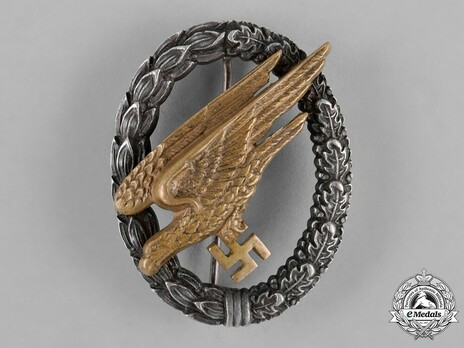
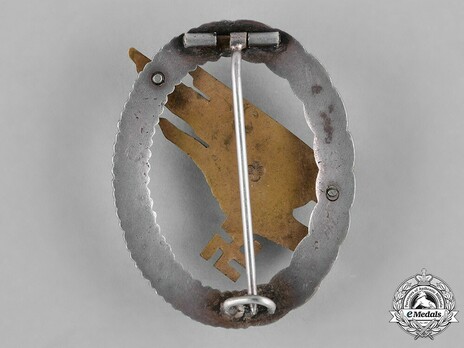
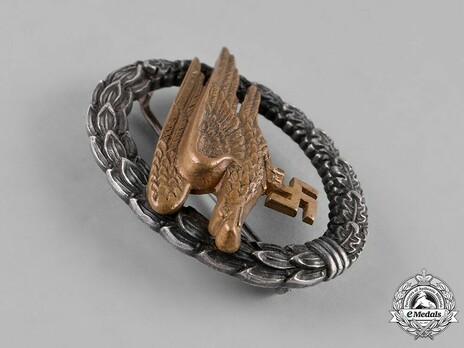
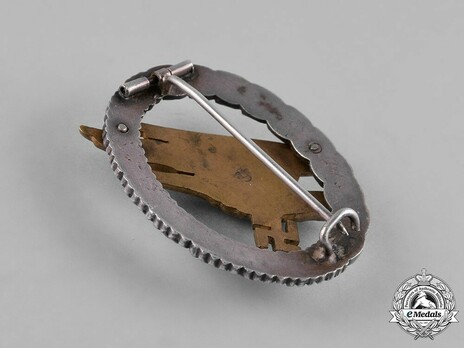
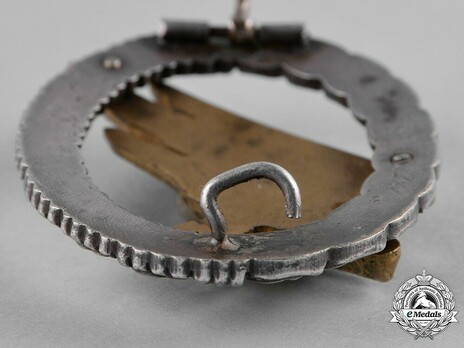
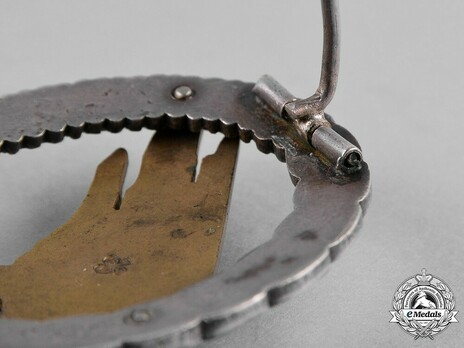
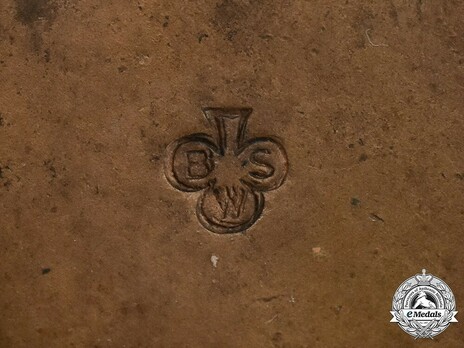
Estimated market value:
(Fallschirmspringerabzeichen). Instituted on 5 November 1936 by Hermann Göring. (Issued 1936-1945). Consisting of an oval nickel-silvered wreath, with laurel leaves on the left half of the wreath, and oak leaves on the right half of the wreath, with a central gilded tombak eagle clutching a mobile swastika in its talons, reverse marked with logo of maker Gebrüder Schneider, Vienna, two rivets visible, with a barrel hinge and vertical pinback meeting a round wire catch, measuring 42.21 mm (w) x 53.64 mm (h), weighing 36.6 grams, in better than very fine condition.
The Luftwaffe Paratrooper Badge was instituted by Hermann Göring on November 5, 1936. It is a qualification badge that was awarded for those that successfully passed the tests to become a paratrooper. In order to do that, a soldier had to have six confirmed parachute jumps to his name.
Later regulations state that officially every owner of a Paratrooper Badge had to repeat this feat inside every 12 months period, otherwise they were to return their badge. However, there is no evidence that this was actually enforced. In fact, in the later years of the war the Luftwaffe Paratrooper Badge could be awarded to any soldier that was part of a paratrooper unit, even those that did not receive parachutist training, but were merely assigned to the unit as a medic or driver.
The initial regulations stated that the wreath of the badge was to be made of oxidized Neusilber. Neusilber, also known as nickel silver, is an alloy of brass and nickel, and does not in fact contain actual silver. Oxidizing nickel silver darkens it and gives it an antique look. The eagle was to be made of gilded brass.
In September of 1937, this was changed. Now, the entire badge was to be made of aluminum, with the wreath still in an antique silver look and the eagle still gilded. Some companies also experimented with cupal, which is not an alloy, but a composite material of an aluminum base with a thin copper plating.
With material shortages worsening as the war went on, by 1942 most badges were now made from a lower quality and abundant material, zinc.
Since most companies produced a plethora of different variants and variations, not necessarily all of them can and will be displayed here.
Badges by Brüder Schneider are very rare. So far, they have only been encountered in a single material combination, a nickel silver wreath and a brass eagle.

Comments
Sign in to comment and reply.


Scroll Top